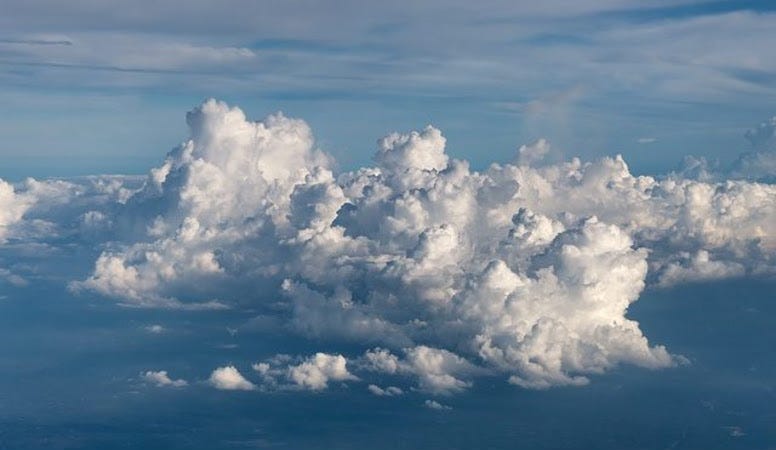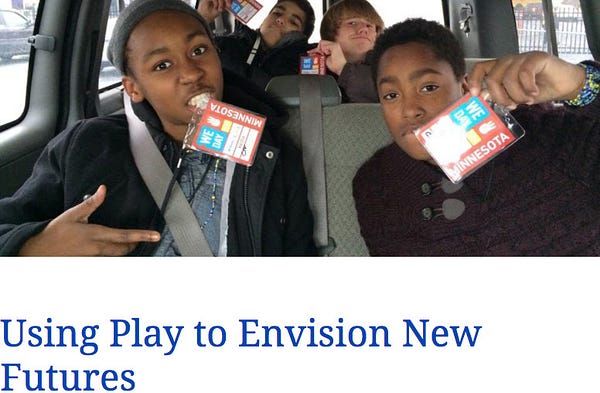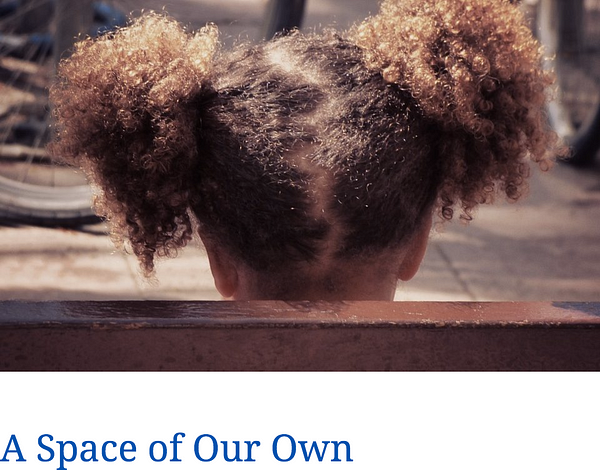The ALLIANCE + Youth Media Reporter
An interview with co-editors Myah Overstreet + Jason Wyman on the collaborative special issue

“For this Special Issue, all media forms were accepted: audio, photography, essays, lesson plans, videos, fiction, and poetry are all present. And through these forms, a vast array of topics are covered in beautifully different ways, like how music can spark confidence, how African American women need a sanctuary of free expression, how mapping our desired futures can bring communities together. Lesson plans give educators a concrete way to teach students about issues that are never talked about, and audio is used as a gateway to another’s reality.” — Myah Overstreet
The ALLIANCE: What were/are your goals for this first-ever collaborative special issue with the Youth Media Reporter?
 Jason: At the very beginning, my goal was to cultivate deep relationships that produced a “product” rooted in personal and collective integrity. I was introduced to Aggie Ebrahimi Bazaz (current editor at Youth Media Reporter) in 2014 through The Alliance for Media Arts + Culture (then NAMAC). I worked at TILT, a youth media program at Ninth Street Independent Film Center in San Francisco, where NAMAC also had an office. At the time, Aggie and NAMAC were supporting a National Youth Media Network and were looking for a facilitator for a pre-conference session for the youth media field at State & Main, the summer 2014 NAMAC/Alliance for Community Media Conference in Philadelphia, PA. Aggie and I began chatting, and I was brought on to help co-design and co-facilitate the session. Later that Fall, Aggie and I both ended up moving in different directions. We kept in contact as friends and stayed informed of each other’s work.
Jason: At the very beginning, my goal was to cultivate deep relationships that produced a “product” rooted in personal and collective integrity. I was introduced to Aggie Ebrahimi Bazaz (current editor at Youth Media Reporter) in 2014 through The Alliance for Media Arts + Culture (then NAMAC). I worked at TILT, a youth media program at Ninth Street Independent Film Center in San Francisco, where NAMAC also had an office. At the time, Aggie and NAMAC were supporting a National Youth Media Network and were looking for a facilitator for a pre-conference session for the youth media field at State & Main, the summer 2014 NAMAC/Alliance for Community Media Conference in Philadelphia, PA. Aggie and I began chatting, and I was brought on to help co-design and co-facilitate the session. Later that Fall, Aggie and I both ended up moving in different directions. We kept in contact as friends and stayed informed of each other’s work.
We are not saying, “It needs to go here.” Rather, we are listening to what is out there and harnessing it in expansive ways that align to core ethics of consensus, conversation, and artistic expression.—Jason Wyman
In the Winter of 2015, I was approached by Wendy Levy, The Alliance’s Executive Director, to help reengage The Alliance’s work in the youth media field. I was honored to be asked and pushed to also include a young person as producer of the work. She agreed, and we brought in Myah Overstreet, then a Freshman at San Francisco State University.
I knew that when I started this work it needed two things. One was a breaking of assumptions and forms. Media has changed. Our communities have changed. And that means our sector has changed. Additionally, the National Youth Media Network that The Alliance was supporting had only been loosely engaged for over a year and a half. This meant that what we thought we knew was probably not what was there. So we needed a line of inquiry that would help us discover what is present. We found that in the central question, “What are our desired futures?”
The second was tangible “products”, material items that could be shared, gathered around, tweeted, contributed to. It is easier to facilitate collective action when there is something one can point to and say, “I helped with / participated in / contributed to that!” These “products” manifested in a variety of forms, including the 50 State Dinner Party Project, a series of Video Roundtables, and a partnership with Youth Media Reporter, all of which were conceived / designed in collaboration between Myah, me, and others from the field.
Myah was personally interested in producing a publication as one of the “products”. She saw the need to have a journal, magazine, or blog that could hold a variety of perspectives, forms, and expressions. She wanted it to be intergenerational, and it was crucial for her that the submission process be about imagination and relationships rather than adhere to strict forms.
Myah: My goal for this first issue is to educate. When people read this journal, I want them to walk away being enlightened or motivated to change something they care about, or that may affect somebody they know.
I would also say my goal is to give exposure to people who are doing big things in their community, and ultimately the world.
Lastly, my ultimate goal for the journal is to provide a glimpse at other people’s realities for others to learn about. I wanted there to be a human to human, writer to reader connection. Now more than ever, people need the opportunity to stop and take a moment to learn about people they may have never thought about. We all need a moment to empathize, and I think this journal will prompt us to do that more often.
This journal pushes the youth media field to grow by forcing inclusivity and diversity of not only the contributors and their backgrounds, but also what pieces that are included.—Myah
Jason: For me, Youth Media Reporter represented The Alliance’s and the youth media field’s ties to our history and relationships. It is an online publication that supports the youth media field through publishing articles that push practices and research forward. Many of The Alliance’s members have written, edited, or reviewed articles for YMR. Also, since leaving NAMAC, Aggie became a professor at Muhlenberg College in Allentown, PA, and Muhlenberg is the home of YMR.
So I chatted with Aggie to see what connective tissues might reside between The Alliance and YMR. We both brought on our respective people — Aggie brought Lora Taub-Pervizpour and Jenna Azar and I brought Myah Overstreet — together to build relationship and work out a possible partnership. We then decided to produce a Special Issue of Youth Media Reporter with Myah Overstreet as Guest Editor.
This opportunity provided even more opportunities. We were able to leverage this partnership to engage our network of youth media artists, educators, organizational leaders, and researchers. We created a call for submissions that empowered anyone of any geography, identity, expression, age to submit concepts of any form that addressed our central question, “What are our desired futures?”
We cannot do things alone. We cannot, and it is a misnomer when someone takes / gets sole credit for anything.—Jason
We also continued cultivating the same ethos we had at the outset of the partnership: conversation, relationship building, deep listening, compromise, and deadlines!
This openness and constant engagement has resulted in a Special Issue of Youth Media Reporter that is reflects the collective ethos of everyone involved in its manifestation. And that to me is what holds the entire thing together. And it also means we achieved our initial goal. And we also have an incredible, high quality product that proves ethics create great work.
How was the experience? What did you learn? What surprised you?

Myah: During the beginning of the process — the planning, the visualizing, the steps towards action — I really enjoyed building something that would be based off of the human day-to-day experience. I loved building something that’s a visual representation of our desired futures. Additionally, this experience was very, very new, to be incredibly simple. It was my first time ever being one of the editorial leads, and it was the first time my title was “guest editor”. I really loved collaborating with everyone to create this journal, and I also loved working with each writer and artist to make sure their piece was strong. I would say the best lesson I learned from this experience is to be calm and to be patient. Patience is everything. Rushing things along won’t help.
Jason: The experience was insightful, liberating, and challenging. Collaboration and building consensus takes time, conversation, trust, and compromise. And creating a publication takes vision, tenacity, and organization. Sometimes, these two different skill sets can be at odds with one another, especially when working on something bold, visionary, and out of the ordinary. But when one is open, communicative, willing to let their ego take the back seat, and responsive to needs there are solutions and possibilities that can bridge what often are called / seen as divides, there are ways to be mutually supportive. This publication strikes that balance.
Submissions come from Utah, Minnesota, California Illinois, New York, and Pennsylvania and range in age from to 50+. Half of the submissions come from youth / young adults, and half are from people of color. It is a picture not of a desired future, but of this lived moment.—Jason
Myah: I was pleasantly surprised by the variety of submissions we received. When we sent out the call for articles, we mentioned that we were accepting pretty much everything (lesson plans, audio, video, photo essays, articles, poems, and short stories). I didn’t expect to get them all! So I was very happy and excited about that, and at that moment I knew we were going to have a great journal coming together. I was also surprised at how many young people we had contribute to the journal. They provided so much great content and provided to true diversity to journal, so I am incredibly grateful for their work and for their participation. They made me feel less alone in a scenario full of adults.
Why is this collaboration important?
Jason: We cannot do things alone. We cannot, and it is a misnomer when someone takes / gets sole credit for anything. There are people and ideas that came before that make their way into every, single “thing”. Collaboration is the only way in which things get done / made / created. It is the cornerstone of my work, and I value naming the ways in which it happens.
For this publication there were numerous collaborations. There was the collaboration between Myah and me as Producers for The Alliance’s Youth Media Collective Action Initiative. There was collaboration between The Alliance and Youth Media Reporter. There was collaboration between Myah and all of the contributors to the Special Issue as editor. There were collaborations within collaborations — the peer reviewers that read every single piece and their relationships both with Myah leading the process and with those whose work they were reviewing.
Where do y’all see the field of youth media going over the next few years? How do you see this YMR issue pushing the field forward?
Jason: Media has changed. It no longer is just the videos produced. Or the process used to create it. It is all of its component parts — Snaps, documentaries, Instagram pictures, virtual reality, cable access shows, Tweets, music videos, video games, blog posts, lesson plans, podcasts, production processes, vlogs, augmented reality apps, and more.
I see this Special Issue of Youth Media Reporter as beginning to harness that complexity. The Special Issue contains videos, research, lesson plans, photo essays, poetry, fiction, personal narratives, and even a distributive list essay. Submissions come from Utah, Minnesota, California Illinois, New York, and Pennsylvania and range in age from to 50+. Half of the submissions come from youth / young adults, and half are from people of color. It is a picture not of a desired future, but of this lived moment.
There is also the art that Myah commissioned for this project, and it’s interface with The Alliance’s new app CherryPix. Myah knew she wanted a strong, bold aesthetic for the promotions of the Special Issue. Outside of my work with The Alliance, I am an artist (www.jasonwyman.com). I have a style of neon, pop-art digital portraiture. Myah saw my work and asked if I would transform the headshots submitted into my signature-style portraits. I agreed and got to work.
Myah: I see the field of youth media growing and learning. Right now, I see it as a child that hasn’t reached its full potential — it still has more growing and learning to conquer.
This journal pushes the youth media field to grow by forcing inclusivity and diversity of not only the contributors and their backgrounds, but also what pieces that are included. I hope it inspires leaders in the youth media field to push for the unconventional rather than the stagnant and oh so boring conventional and mediocre.
Media has changed. Our communities have changed. And that means our sector has changed.—Jason
Jason: Myah and I also saw the launch of the Oakland Fence Project at Alliance, our bi-annual conference in June 2016 in Oakland, CA. I knew that OFP was turning into CherryPix and had initial conversations with Myah and Wendy about turning the entire promotional side of the Special Issue into a augmented reality experience using my portraits as a portal into the Special Issue online. The idea is that through the CherryPix App the portraits fade away into a video of the author sharing their desired future ending with a link to Youth Media Reporter. This way, promotion can be unified aesthetically while being customized for the individual contributor.
Also, we knew these portraits were a bold, visionary choice. We knew that different people have different relationships to their public image, especially online. So instead of just publishing the images outright, we circled back to all of the contributors and asked for feedback on their images. If they were uncomfortable with their portrait, we either incorporated their feedback into the portrait or change the portrait to a simple color swatch with their name. This way everyone was included in the visually branded materials while maintaining consent on use of their image.
To me, this is how we are pushing the field forward. We are not saying, “It needs to go here.” Rather, we are listening to what is out there and harnessing it in expansive ways that align to core ethics of consensus, conversation, and artistic expression.
